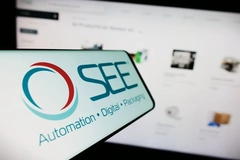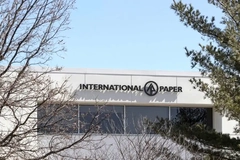Fiber-based risks and rewards: Mondi and PulPac talk environmental innovations

05 Apr 2023 --- As consumers’ awareness of packaging’s environmental impact rises, companies are continuously shifting toward fiber-based packaging to demonstrate their commitment to environmentally friendly solutions.
According to research, The fiber-based packaging market is expected to reach US$503.4 billion by 2027. In 2021, Innova Market Insights labeled this trend a “Fiber-based Frenzy.”
PackagingInsights speaks with Mondi and PulPac, who are innovating in the fiber packing space, about how consumer demand drives the industry to perform enhanced R&D for fiber packaging solutions that a few years ago were not possible.
Fabio Peyer, head of sustainability flexible packaging at Mondi, tells us he is “witnessing a drive from end customers to move toward more environmentally sustainable packaging with a strong consumer preference for recyclable solutions.”
 Mondi invests in R&D for fiber packaging solutions.Policing greenwashing
Mondi invests in R&D for fiber packaging solutions.Policing greenwashing
The chief commercial officer at PulPac, Sanna Fager, explains to PackagingInsights that as fiber packaging grows so will companies who are exposed for making misleading claims about ecological solutions.
“I expect brands that engage in greenwashing or don’t clearly shift toward sustainable and circular solutions will be held accountable. Transparency and honesty will be rewarded.”
Innova Market Insights flagged that environmental claims like “carbon impact,” “reduced packaging,” and “plastic-free” on F&B packaging have almost doubled (92%) since 2018.
However, the proliferation of sustainability messaging has also created fears of unsubstantiated claims.
“Consumers are getting increasingly knowledgeable and legislation is catching up. Sustainable packaging has the potential to become the new standard – but it’s up to the brands and the industry to turn ambition into action,” continues Fager.
Innova Market Insights also reported that global consumers increasingly demand product transparency around sustainability claims, with 47% wanting to see the level of a pack’s environmental impact illustrated as a score or grade.
“At Mondi we are material agnostic. We have the philosophy of paper where possible, plastic when useful. We believe in replacing unnecessary plastic with renewable paper-based packaging,” adds Peyer.
Additionally, Innova found that a majority of global consumers perceive paper-based packaging as being “somewhat environmentally sustainable” (37%) (plastic packaging (31%)) or “very environmentally sustainable” (35%) (plastic packaging (15%)).
Peyer also notes that paper has the highest recycling rates in Europe and is renewable.
Climate change accusations Sanna Fager, chief commercial officer at PulPac.
Sanna Fager, chief commercial officer at PulPac.
However, last year experts from the Environmental Paper Network (EPN) warned that the paper packaging industry is inadvertently contributing to one of the most serious impacts of climate change: water loss.
The network said the water loss is partly caused by the massive uptick in businesses replacing plastics with fiber-based materials to reduce reliance on fossil fuel-based resources and advertise their carbon emissions reductions.
According to the EPN, the average sheet of A4 paper swallows at least 20 liters of water. This takes up 10% of the country’s entire water supply in some nations. Over half of the world’s paper supply is used in packaging. Due to transport and disposal issues, a 2013 EPN study suggested that paper could produce more greenhouse gas emissions than the aviation industry.
Increasing innovations
In recent years, fiber-based packaging was limited in its applicability as it did not contain the same oil resistance, heat and cooling management as materials such as plastic. Some see fiber packaging as lacking the same safety, protection, shelf life, performance, product visibility and functionality that other materials such as plastic, glass or metal may provide.
However, with more companies shifting to paper, the R&D for the material is showing promising solutions that could eliminate the need for other materials.
“Paper has also become more advanced in the last years. New technological advancements mean paper is delivering in areas where just a few years ago, the standard was lower. This approach aims to provide the most [environmentally] sustainable packaging solution but recognizes that the material used in that packaging is, ultimately, secondary to its purpose – protecting the product,” says Peyer.
“While paper has many sustainability benefits, it doesn’t always offer the best barrier protection against factors such as moisture, odor or oils. We still need to protect the product and ensure shelf life. This is why we developed FunctionalBarrier Paper with three levels of barrier coatings,” explains the senior content development strategist for flexible packaging at Mondi
Mondi’s Functional Barrier Paper is a range of paper-based packaging with tailored barrier properties that reduce plastic use and provide moisture and vapor-proof packaging. The range is designed to be recyclable in paper streams across Europe and is made from the responsibly sourced base paper. The barrier levels are customized to the product requirements.
“We are investing in an R&D center at Mondi Steinfeld to support customers and help them develop solutions that achieve their sustainability goals as well as fitting the product,” declares Peyer.
 PulPac showcases the oil resistance of its Dry Molded Fiber tray. Dry Molded Fiber
PulPac showcases the oil resistance of its Dry Molded Fiber tray. Dry Molded Fiber
PulPac’s chief commercial officer also states that due to its R&D, it is developing fiber solutions that would not have been possible a few years ago. “We have worked successfully on barriers for hot and cold food, liquids and oil.”
Fager continues that PulPac wants the shift toward fiber-based packaging to accelerate.
“In parallel with continuous R&D, we are inviting producers to start with market-ready applications that need no further development to start production. To make it easy to get going, we have developed a ‘fast lane’ program, a range of standardized and validated products, ready for production – and partners in our network are equally ready to supply the machinery and materials to start producing.”
However, since Dry Molded Fiber is a new technology, PulPac says it has had its share of challenges.
“Our industry is not used to licensing – but that is the legal framework for sharing technology and know-how and making sure that our technology stays available to the whole industry,” explains Fager.
“We developed this technology to tackle a global problem. Thus, we decided to focus on our expertise and team up with the best partners in their field. Working together to push the envelope and make an even more significant impact.”
Carbon emissions reductions
The production of one metric ton of fiber packaging produces 0.7 metric tons of CO2 emissions, while the same figure for plastic packaging amounts to 1.8 metric tons of CO2, a study from 2018 revealed.
“The sustainability features of fiber are outstanding. It’s globally available and there is an infrastructure for collecting and recycling fiber, one of the most recycled materials in the world,” asserts Fager.
“As we managed to take almost all the water out of the fiber-forming equation, Dry Molded Fiber lowers carbon emissions by up to 80% compared to alternatives. It also means cost efficiency and shorter cycle times that can compete with the production of single-use plastic.”
Innova Market Insights reports that 34% of consumers worldwide say a reduced carbon footprint score positively influences purchasing decisions.
“We believe in fact-based decision-making. It is important to look at the sustainability of packaging from many angles. It is important to do life cycle assessments and product impact assessments for our packaging solutions to analyze their environmental impact,” concludes Peyer.
By Sabine Waldeck











